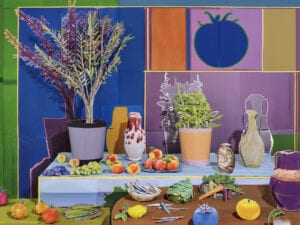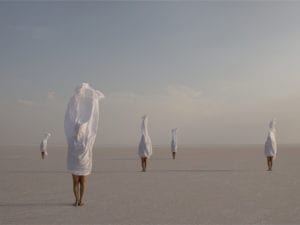Elina Brotherus’ (b. 1972) self-portraits exude a sense of mystery. Often, her face is obscured or turned away from the camera. Positioned within idyllic landscapes, she holds a mirror in front of her head or looks towards the moonlit sea. The rückenfigur – a compositional technique showing a figure from behind – recurs across her work. Its has been used throughout art history, from German painter Caspar David Friedrich’s Wanderer Above the Sea of Fog (1818) to contemporary pieces, like Cig Harvey’s self-portraits.

Studies in the arts inform Brotherus’ creative practice. These images all come from the series Meaningless Work (2016-present). It is inspired by a seminal book by American academic M. H. Abrams (1912-2015). In The Mirror and the Lamp (1953), he argued 18th century art was primarily concerned with reflecting reality. Later in the Romantic era (1800-1850), there was a “change from imitation to expression.” Instead of copying their surroundings, artists instead could help us to see the world in a different light.

In Artist as Lamp (2019), we see person stands planted amongst the trees. Her head, covered by a lamp-shade, emanates a radiant glow. Here, and in other works selected for Camara Oscura Galeria de Arte’s retrospective, Brotherus casts herself in the dual role of creator and subject. Concealment enables her to tap into a rich artistic history whilst inviting the spectator to imagine themselves within these surreal scenes. She explains: “when you don’t show the face, the character could be anybody. It could be you.”
Camara Oscura, Elina Brotherus: Artist as Clown | Until 27 January
Words: Diana Bestwish Tetteh
Image Credits:
- Courtesy of the artist and Camara Oscura Galeria de Arte, Madrid.





